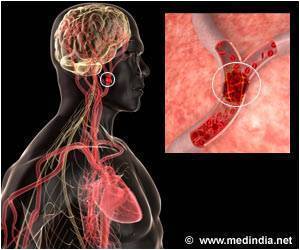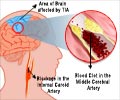Stroke patients getting in-patient rehabilitation are likelier to get readmitted in a hospital within three months if they are performing poorly, express signs of depression and lack social support.
Stroke patients getting in-patient rehabilitation are more likely to get readmitted in a hospital within three months if they are performing poorly, express signs of depression and lack social support state researchers at the University of Texas Medical Branch (UTMB) at Galveston. Hospital readmission for older adults within 30 days of discharge costs Medicare roughly $18 billion annually. Among the first of such research to explore the risk of re-hospitalization among this patient segment, the study is available online at
The Journals of Gerontology Series A: Biological Sciences and Medical Sciences. The findings are timely as effective this October hospitals will be held accountable for high short-turnaround readmission rates. According to Dr. Kenneth Ottenbacher, Director, Center for Rehabilitation Sciences, and Associate Director, UTMB Sealy Center on Aging, "by identifying clear demographic, clinical and environmental factors that lead to rehospitalization, we can develop meaningful quality indicators for post-acute care that target ways to improve patients' health and contain costs by reducing the likelihood of readmission." Currently, more than 30 percent of stroke patients receive in-patient rehabilitation after release from acute care, he said. "Though we intuitively know that these patients are at highest risk for being rehospitalized – especially if they are depressed, isolated or lack independence – the data to support this did not exist prior to our study," said Dr. Ottenbacher. The UTMB findings offer new measures for much-needed research as most studies on readmissions used Medicare data, which by design focuses on payment rather than patient data, he added. The researchers examined sociodemographic and clinical factors associated with hospital readmission in a sample of nearly 700 first-time stroke patients who received post-acute inpatient rehabilitation between 2005 and 2006 at nine facilities in eight states and the District of Columbia. Data were collected via discharge follow-up interviews conducted by each facility within 72 hours of release and again three months later. These included:
- Rehospitalization within three months of discharge from inpatient rehabilitation;
- Sociodemographic characteristics, including age, gender, race/ethnicity, education and marital status;
- Clinical measures, including comorbidity, length of rehabilitation stay, stroke type and body involvement (e.g., right, left, bilateral);
- Functional status (e.g., activities related to self care, communication, social cognition, mobility and control of bodily functions);
- Depression symptoms; and
- Social support, to determine risk of isolation.
Of the nearly 700 stoke patients, approximately 18 percent were rehospitalized during the three months following discharge. Patients with better motor and cognitive abilities at rehabilitation discharge were less likely to be rehospitalized; conversely, those reporting more depressive symptoms and/or lower levels of social support were most likely to be readmitted. Dr. Ottenbacher identified social support as being one of the most important predictors identified because it can be factored into discharge plans and used to identify patients who could benefit from services designed to prevent hospital readmission, such as home health services. This is a significant finding, as information on patients' social support is not currently included in data sets that could influence health policy, he said. In white patients, signs of depression increased the risk of rehospitalization by 21 percent. However, minorities with depressive symptoms had a five percent lower risk of being readmitted. The difference was diminished when the researchers adjusted their analyses to account for racial and ethnic variables, such as disease comorbidity, and the study's small sample size of minority patients. "Though this disparity did not hold up in our study after adjusting for sample size, we were surprised by the preliminary finding and believe it is an important topic for future research in a larger minority population," said Dr. Ottenbacher. Factors determining which kind of post-acute-care services a person with stroke receives, such as nursing home care versus in-home assistance, are complex and may also impact rehospitalization rates – another aspect Dr. Ottenbacher plans to include in future research. Finally, he notes that because this study focused on stroke patients only, the findings need to be examined in other patients to determine if the same factors offer predicative value across other conditions.
Source-Eurekalert
















